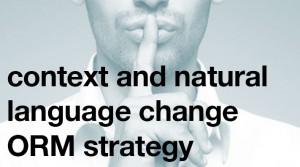As organizations begin to implement their change initiatives and re-establish the way they do work, I cannot help but think about the body of knowledge I worked with during my time in graduate school around covert processes at work. Robert Marshak describes six dimensions that impact any organizational change plan that need to be addressed to ensure the success of that effort. In a previous article, I discussed the different themes organizations need to consider as they set up their ‘return to office’ (or not) strategies. In this article, I will be covering Marshak’s work on hidden covert processes that you will need to keep an eye out for and consider to ensure your organizational change plan is implemented and managed successfully.
To start, what are covert processes?
Unlike overt processes, which can be observed, covert processes are hidden, unspoken, and unacknowledged. They are the collective unconscious dynamics that exist within organizations that regularly impact the interactions and responses of people within the organization. If change management leaders do not account for them in their plans, these processes or dimensions can impact the workflow and stand in the way of achieving organizational goals and change objectives. It is important to know that covert dynamics occur outside of our awareness and you and your employees can be engaging in them without knowing it.
The 6 dimensions of change
Marshak lists six dimensions of change: Reason, Politics, Inspirations, Emotions, Mindset, and Psychodynamics. The first is the only overt dimension out of the six whereas the latter 5 are covert.
1) Reason
Reason is the only overt dimension and shows up when organizations are making the case for change. It is the rational and logical process organizations follow to come up with a compelling reason for why they need to implement a change. Today, reason is paid the most attention to when planning for organizational change. Organizations understand that they need to make a change to survive and remain competitive.
This of course is a very important part of any change initiative to get buy-in. However, solely emphasizing on it, negatively impacts the change process. This tunnel vision can reduce common and expected resistance to irrationality, when in fact it is the result of other dismissed yet valid and powerful forces. Therefore, it is important to account for the five other covert dimensions that can hinder any well thought out change effort.
2) Politics
The covert dimension of politics refers to the events in which individuals, teams or work units work towards their own interest. While this kind of behavior is deemed inappropriate in work environments, it is something that is bound to occur. It might even be the case that the change effort itself was initiated to fulfill a groups’ or maybe a leader’s own interest. Therefore, it is quite necessary to anticipate what political dynamics might surface when managing a change and think through the different courses of action to take to address them.
3) Inspirations
Marshak describes Reason as the head and Inspirations as the heart. Making the case for change rationally is not enough to get the ball rolling; people need to be inspired to be bought in. So change efforts need to be accompanied by value-driven vision statements that evoke inspiration; the third dimension. It is important to look beyond the numbers and logic and inspire people to do ‘better’ or ‘be more impactful’ or ‘make a difference’. This covert dimension of organizational change can be quite powerful. When unaddressed, it can be a missed opportunity for moving change along more smoothly. Moreover, reason might at times clash with and oppose unspoken yet existing values within your organization if both are not addressed, which in turn can hinder the change effort.
4) Emotions
With any change comes a normal and predictable wave of emotions across the organization. Some of these emotions can be acceptance or excitement, but they can also be denial, anger, fear, or sadness. More often than not they are expected to be hidden and unexpressed as they are considered inappropriate in the workplace. However, it is important to engage the workforce and allow them to express their sentiments and emotions. Unexpressed emotions can impact the change effort and if they remain unacknowledged, they can lead to inefficiencies, delays, and maybe even sabotage. Therefore, it is just as important to make space for these emotions as it is to reiterate reason.
5) Mindset
Marshak describes the mindset dimension as the unexamined assumptions, beliefs, and premises that people have and use to interpret the world and in this case, organizational change. These mindsets are covert frameworks that we are generally not aware of having. Mindsets vary from one person to the next and can impact how change efforts within an organization are perceived. Mindsets limit the perceived possibilities of the outcome of change. Moreover, these perceptions significantly vary from one person to the next, so there is a lack of uniformity in how the change is being perceived. Not addressing this dimension can ripple into the other dimensions such as emotions and in turn negatively impact the change process. Therefore, change management includes challenging these mindsets and making them more overt, because it is only by doing so that people can recognize the limitations of their assumptions and entertain alternative possibilities and outcomes of the change.
6) Psychodynamics
The psychodynamic dimension, which includes our unconscious reactions to change, is the most covert out of all dimensions… and the most taboo and off-limits topic to bring up in a workplace. Yet, it can greatly impact any change effort. Psychodynamics might show up as defense mechanisms such as avoiding the whole change effort, arguing and fighting about it, shutting down emotionally transferring feelings for certain figures in your life to your managers or colleagues etc… and a lot of these dynamics might actually be related to other parts of your employees’ lives outside of work. While this might seem like a sensitive topic that is beyond the scope of work, it still shows up and impacts the work. So, there is something to be said about acknowledging it. I am not suggesting setting up group therapy sessions but acknowledging that these forces are at play. Acknowledgement of your own psychodynamics can help you as leaders identify how they impact your interaction with the change and in turn model to your people how to approach it.
I realize that these dimensions are relatively broad and can be dealt with in several different ways. How you choose to integrate these six dimensions into your change analysis will be highly dependent on time, resources, and the nature of your organization, leaders, and people. But, if you set the intention to go beyond Reason and address the covert Politics, Inspirations, Emotions, Mindset, and Psychodynamics, you are more likely to achieve a successful change.
Reference: Marshak, R. J. (2006). Covert processes at work managing the five hidden dimensions of organizational change. Berrett-Koehler Publishers.
Business & Finance Articles on Business 2 Community
(38)
Report Post








